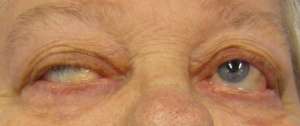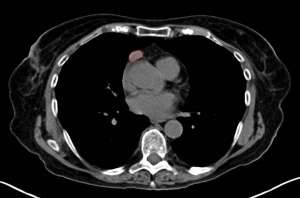Myasthenia gravis
Background
- Autoantibody degradation, dysfunction, and blockade of acetylcholine receptor at the NMJ
- Thymus is abnormal in 75% of patients
- Thymectomy resolves or improves symptoms in most patients, especially those with a thymoma
- No sensory, reflex, pupillary, or cerebellar deficits
Drugs that may unmask or worsen myasthenia gravis[1]
- Antimicrobials (Aminoglycosides, clindamycin, erythromycin, tetracycline, doxycycline, azithromycin, fluoroquinolones, vancomycin, chloroquine, hydroxychloroquine, )[2]
- Cardiovascular drugs (beta blockers, procainamide, quinidine)
- Neuro/psych meds (chlorpromazine, lithium, prochlorperazine, phenytoin, risperidone,
- Other (Botox, quinines, magnesium)
Drugs Usually well-tolerated in myasthenia gravis but occasionally associated with an exacerbation
- Local anesthetics
- Antibiotics (Tetracycline/doxycycline, macrolides, metronidazole, nitrofurantoin)
- Anticonvulsants (carbamazepine, ethosuximide, gabapentin, phenobarbital, phenytoin)
- Butyrophenones (haloperidol)
- Phenothiazines (chlorpromazine/prochlorperazine)
- Calcium channel blockers
- Steroids
- Ophthalmic drugs (betaxolol/timolol/proparacaine)
- Other (Iodinated contrast agent)
Clinical Features

- Muscle weakness
- Proximal extremities
- Neck extensors
- Facial/bulbar muscles (dysphagia, dysarthria, dysphonia)
- Ocular weakness
- Symptoms worsen with repetitive use / as the day progresses[3]
Differential Diagnosis
Drug-induced myasthenia
- Antibiotics (aminoglycosides, fluroquinolones, clindamycin, metronidazole, macrolides)[4]
- Steroids
- Anticonvulsants (phenytoin, barbiturates, lithium)
- Psychotropics (haloperidol)
- Beta-blockers / calcium-channel blockers
- Local anesthetics
- Opioids
- Anticholinergics (diphenhydramine)
- NMJ blocking agents (rocuronium, succinylcholine)
Weakness
- Neuromuscular weakness
- Upper motor neuron:
- Lower motor neuron:
- Spinal and bulbar muscular atrophy (Kennedy's syndrome)
- Spinal cord disease:
- Infection (Epidural abscess)
- Infarction/ischemia
- Trauma (Spinal Cord Syndromes)
- Inflammation (Transverse Myelitis)
- Degenerative (Spinal muscular atrophy)
- Tumor
- Peripheral nerve disease:
- NMJ disease:
- Muscle disease:
- Rhabdomyolysis
- Dermatomyositis
- Polymyositis
- Alcoholic myopathy
- Non-neuromuscular weakness
- Can't miss diagnoses:
- ACS
- Arrhythmia/Syncope
- Severe infection/Sepsis
- Hypoglycemia
- Periodic paralysis (electrolyte disturbance, K, Mg, Ca)
- Respiratory failure
- Emergent Diagnoses:
- Symptomatic Anemia
- Severe dehydration
- Hypothyroidism
- Polypharmacy
- Malignancy
- Other causes of weakness and paralysis
- Acute intermittent porphyria (ascending weakness)
- Can't miss diagnoses:
Evaluation


- Ice Pack Test- should improve symptoms temporarily (usually ptosis; high specificity)
- Place ice-pack on eyes for 2 mins, if ptosis decreases by ≥2mm the test is positive
- Acetylcholine receptor antibodies (AcHR-Ab). Positive in 80-90% of generalized MG and 40-55% in Ocular MG.
Myasthenic versus cholinergic crisis
Flaccid paralysis resulting from cholinergic crisis can be distinguished from myasthenia gravis by the use of the drug edrophonium, which worsens the paralysis caused by cholinergic crisis, but strengthens the muscle in the case of myasthenia gravis. (Edrophonium is an cholinesterase inhibitor hence increases the concentration of acetylcholine present).
- Myasthenic Crisis
- Respiratory failure is feared complication
- Much more common
- Due to medication non-adherence, infection, surgery, tapering of immunosuppressants, meds
- Cholinergic Crisis
- Excessive anticholinesterase medication may cause weakness and cholinergic symptoms
- Rarely if ever seen with dose limitation of pyridostigmine to less than 120mg q3hr
- If on usual dose of meds assume exacerbation due to MG even with cholinergic side effects
- Edrophonium (Tensilon) test to distinguish the two is controversial
- Give 1-2mg IV slow push. If any fasciculations, respiratory depression, or cholinergic symptoms within a few minutes, problem is likely cholinergic crisis (no more edrophonium). If no evidence of cholinergic excess, give total of 10mg and observe improvement in case of myasthenic crisis.
- Side effects of Edrophonium: Arrhythmias, Hypotension, Bronchospasm
- Thus, need to be on a monitor, with atropine on hand
- Treatment: Atropine
Management
Always evaluate:[5]
- Tidal volume
- Forced Vital capacity (normal is >25cc/kg in MG)
- FEV
- Negative inspiratory force (NIF) (normal is -80 to -100 and greater than +20 respiratory support indicated)
- Ability to handle secretions
Investigations[6]
- ACh-R antibody testing: first-line investigation. Indication for thymectomy if < 45 years.
- MuSK antibody testing: for patients negative for ACh-R antibodies
- Thyroid function
- Neurophysiology: Repetitive nerve stimulation is the initial test; if negative, consider single-fibre electromyography.
- MR scan of brain: Patients with negative serology and neurophysiology, and symptoms compatible with ocular myasthenia may have structural brain disease.
- Thymus scanning: All patients with suspected myasthenia, irrespective of distribution (ocular/generalised) or serology (seropositive/negative), should undergo thymus imaging. The modality (CT or MRI) should be decided locally.
- Edrophonium/Tensilon test
Medications
Pyridostigmine and neostigmine primarily used for symptomatic relief but does not alter course of crisis[7]. Consider avoiding pyridostigmine/neostigmine in ICU ventilated patients, as these may increase secretions. Continued use of these meds also prevents assessment of other treatment modalities and can increase muscle weakness if used in excess
- Pyridostigmine: Titrate up to find the lowest effective dose
- Initially 30 mg four times daily for 2–4 days
- Then 60 mg (1 tablet) four times daily for 5 days and experiment with timing
- Then increase to 90 mg four times daily over 1 week if required.
- If patient's usual dose has been missed the next dose is usually doubled
- IV route: 1/30th of the PO dose (2-3mg) by slow IV infusion
- Neostigmine
- 0.5mg IV
Prednisolone: If symptomatic despite Pyridostigmine. Monitor diabetes mellitus.
- Ocular myasthenia gravis
- Start 5 mg on alternate days for three doses and increase by 5 mg every three doses until symptoms improve.
- The maximum dose is 50 mg on alternate days or 0.75 mg/kg/alternate day
- Generalised myasthenia gravis
- Start 10 mg on alternate days for three doses and increase by 10 mg every three doses until symptoms improve.
- Maximum dose is 100 mg alternate days or 1.5 mg/kg
- Effect lasts 15-20 days
- 0.4 g/kg/die for 5 days
- Effect lasts 30-45 days
In Myasthenic Crisis :
- Acetylcholinesterase inhibitors are discontinued to avoid excessive bronchial secretions
- Intubation
- If possible avoid depolarizing AND non-depolarizing agents
- If patient requires paralysis use non-depolarizing agent at smaller dose
- If must use depolarizing agents, will need higher doses
- IVIG and plasmapheresis
Disposition
- Typically MICU or neuro ICU, consideration for thymectomy if not done already
- Consideration for corticosteroids or other immunosuppressants (i.e. corticosteroids, azathioprine, mycophenolate mofetil, cyclosporine)
See Also
References
- https://neurology.uams.edu/wp-content/uploads/sites/49/2018/03/Drugs-that-may-worsen-Myasthenia-Gravis.pdf
- UpToDate Clinical manifestations of myasthenia gravis may 2016
- Tintinalli's Emergency Medicine: A Comprehensive Study Guide, 7e (2010), Chapter 167. Chronic Neurologic Disorders
- Sanders DB, Guptill JT. Myasthenia Gravis and Lambert-Eaton Myasthenic Syndrome. Continuum. 2014 Oct;20(5)
- Emergency Medicine Practice -- Weakness: A systemic approach to acute non-traumatic neurologic and neuromuscular causes Dec 2002
- Myasthenia gravis: Association of British Neurologists’ management guidelines
- Wendell LC and Levine JM. Myasthenic Crisis. Neurohospitalist. 2011 Jan; 1(1): 16–22.